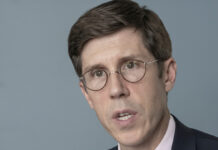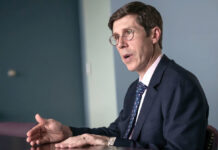For this morning’s column, I want you to engage in a little thought experiment. Based on the e-mails readers have sent, many of you figure the Dec. 15-16 Federal Open Market Committee meeting is a no-brainer and that the central bank will raise its benchmark interest rate. Well, let’s put that thesis to the test. To do so, I am making you, dear reader, the chairman of the Federal Reserve. The setup for our barely hypothetical scenario is as follows:
Imagine (it’s not that hard to do!) that a huge financial crisis and economic collapse has occurred. The historical response to a crisis like this has been a combination of fiscal and monetary stimulus to replace the decline in household and private-sector demand. But this time, political gridlock and ideological foolishness made the usual fiscal response impossible. That left monetary policy — mostly asset purchases via quantitative easing and zero interest rates — as the sole post-credit-crisis stimulus.
The economy has rebounded, albeit slowly. Gains in gross domestic product and employment have been achieved in the seven years since the crisis; GDP is rising at about 2.5 percent a year, while unemployment is down to 5 percent from a high of 10 percent. Employment levels have finally returned to pre-crisis levels. However, it remains a mediocre, lumpy recovery. Wages have been little changed for a decade; there are high levels of underemployed and discouraged workers. Millions have left the labor force, while millions more have gone on disability. Demographics should mean that baby boomers are retiring en masse, but instead, the fastest growing age cohort for employment is 55 and older.
If that sounds bad, the rest of the world is worse. Japan has copied the U.S. in implementing a huge QE program, with mixed success. It keeps slipping in and out of recession, leaving observers to wonder what it would look like without the stimulus. Europe has been dragged down by its southern nations, the unending Greek debacle and lots of crisis-related debt. The recent terror attacks don’t do much to instill public confidence that leadership institutions have a grip on things.
China, the world’s second-biggest economy, has its own problems. Amid rampant malinvestment in housing and infrastructure, China had a huge stock market bubble. All of those assets are undergoing a significant market repricing. The Shanghai index has tumbled more than 30 percent since June; the country’s annual growth rate, which once approached 15 percent back in 2007, is now running at less than 7 percent.
All of these global complications have led the International Monetary Fund to take the unprecedented step of begging the Fed to leave rates unchanged.
Let’s make the game even more interesting.
The most recent employment data was 271,000 — the most this year — and you have one more monthly jobs release before your final Fed meeting of the year. There are signs that the labor market is beginning to heat up, and even some indicators that wages are on the verge of increasing. But the dollar remains at nine-year highs, making U.S. exports less competitive, and a rate increase might add to the currency’s strength. On top of that, commodity prices have been collapsing and inflation is nowhere to be found.
Hmm, things are beginning to seem a bit more complex than they did at first blush.
Also consider that corporate profits are beginning to sag. Oh, and 2016 is a presidential election year, and your decision might be seen through the lens of partisan politics.
So, as Fed chief how do you even frame the issues up for debate?
— Should we still be on the emergency footing implied by zero interest rates or is it time to start normalizing rates?
— Do we wait for unemployment to fall more at the risk of a rise in inflation?
— Is it appropriate to maintain an accommodative rate environment in a weak global economy?
— Do we even consider the global exigencies or stay strictly within the Fed’s dual mandate of stable prices and maximum employment?
Given all of the above, how significant is this Friday’s employment situation report? Does it really matter if nonfarm payrolls increase by 150,000 or 250,000? Unless the number is some shocking outlier, is it anything more than noise?
OK, time is up: What are you going to do?
Not as easy as you think it is, is it?












